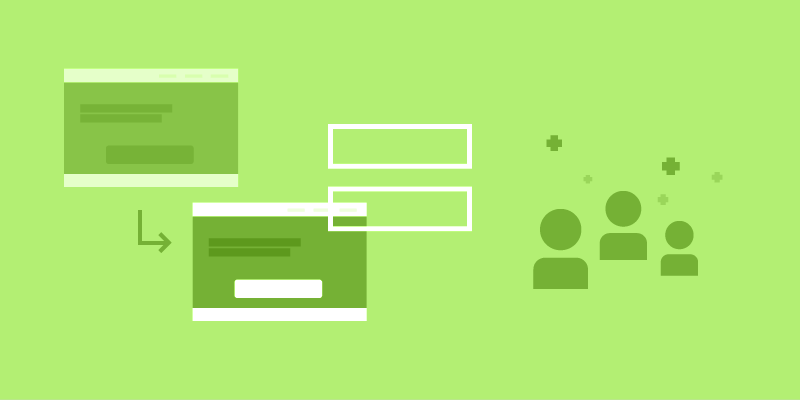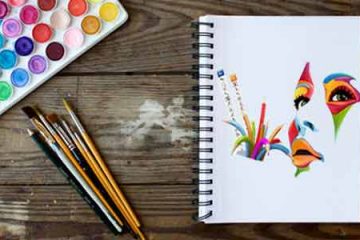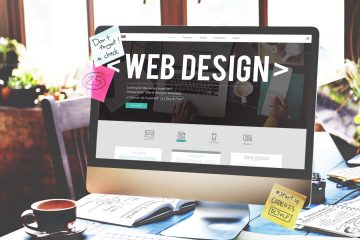
8 THINGS TO KNOW ABOUT BUILDING A DESIGN PORTFOLIO
Two years ago, I was wrapping up my final semester at college and was preparing for the most important moment in a student’s design career: portfolio reviews and finding work. Even though I had just finished my degree in graphic design I was still looking for a job as a UX/UI Designer.
My hard work paid off. It was a wonderful experience to land a job at Block.
It was difficult, however. I received a lot rejection emails and made many mistakes. Now that I am building a company that hires UX designers every day, I can look back on my portfolio and learn from the lessons I learned. These are 8 things I did right and wrong.
1.Your work can be used as a case study.
As many case studies and examples as you can to fill your portfolio.
My portfolio was filled with beautiful, large-scale visuals when I applied for college jobs. I have always used it for UX/UI jobs, but I need help. “Why? “Why?
I asked a friend for assistance. She shared a few portfolios from friends who had been hired by top-tier companies.
All had case study. These case studies were rich and wonderful and covered their design process, successes and failures as well as their final design solutions.
I thought Why can’t I have case study?
So, I also added case studies. And success. My employer response rate jumped.
Although beautiful images are great, they will only tell hiring managers if you can solve the problem. Can you design an attractive and helpful solution for your clients, users, and stakeholders? Talk about your process, including your tried answers, how they worked, and what didn’t. You can show a lot of work, including wireframes, prototypes and scrapped visuals to demonstrate your problem-solving skills.
Demonstrate that you are able to solve problems and you will be hired.
2.Take care of your portfolio.
Is your portfolio specialized or general? This is a difficult decision for design students. Diversifying your portfolio is a good idea. Show a range of work, including packaging, print, advertising and web. Others recommend that you specialize. You like mobile apps? Do you want to create mobile apps for the future? Your portfolio should include mobile apps.
If you are still looking for a career and don’t know what you want to do, it’s okay to have breadth. If you are looking to design mobile applications , then specialize, specialize, specialize. This specialty should make up the majority of your portfolio work.
At the beginning of my career, I wanted to do UI design. So I applied for UI positions. My portfolio consisted of web and mobile interface design. My entire portfolio over the last three years was not all web-based . In fact, more than half of my work was printed. However, I did not want to work in print so I left it out. And I got the job that I wanted.
3.Demonstrate real-world work even if it has problems.
In school, I had an excellent internship. My team loved my work and I was a master at designing it. My internship was a success and I felt proud. My internship ended quickly, and my team disbanded partly because of the hard work I did.
Awkward. Although the work was great, it didn’t end in my favor. It was a great piece of work, but I needed to find a better fit for my portfolio. I would have to mention it to potential employers.
It was added to my portfolio.
It was an awkward: I had to present a project during interviews that I still needed to complete. Being honest about my failures was a great asset. I was open about the success and failure of the project. I discussed what could have been better. I shared that I had tried and learned. That was a big hit with the designers who I spoke to.
Designers only understand what it is like to work with you once they work with you. As a substitute, you can show that your experience working with others. Real-life experience is a great way to show your character. It shows you are able to work well with others, even under tight deadlines. Talking about a project’s failure is a good thing. While you don’t have to be ashamed of the work you did, it’s okay to criticize the results.
4.Less design exercises. More case studies.
Portfolio #1: typography posters, an ad for a hypothetical product, Reddit redesign.
Portfolio #2: Ad for a hypothetical product, Facebook redesign or concert poster.
Portfolio #3: Craigslist redesign. Fake mobile app. Fake ad campaign.
It’s easy to find class projects by looking through hundreds of portfolios.
Let me be very clear. Posters from your first year typography class are cool. They don’t prove that you can solve problems on your own, but they do show that you can follow a prompt. Make sure you include design exercises in your portfolio.
5.Talk about results
I was applying for a job as a intern.
I had completed a design exercise with the company and was now explaining my idea to the interviewer. As I was finishing my sentence, I felt confident and proud of the interactive wireframe I had created.
The interviewer then asked, “What are your goals with this design?”
I mumbled a repetition of the prompt that they had given me.
The interviewer stopped. I refused. Needless to mention, I was turned down for the internship.
I love seeing beautiful, entertaining interaction design work. Site Inspire’s layouts are so beautiful that I can spend hours admiring them. My own experience has taught me that if your design does not improve user experience, solve business goals, or achieve any other outcome, it is purely decorative and ineffective.
Talk about results. Get real data if you can. If you are unable to collect data, which is often difficult for student projects, then interview your stakeholders and users to determine if your design meets its goals. A goal and an outcome are the best way to start and finish a project.
6.Your portfolio should be easy to navigate.
Today I have to conduct user interview , meet stakeholders, design a sticker and approve a UI modification.
I must quickly distinguish the good portfolios and the bad.
I spend a maximum of 2 minutes per portfolio.
Beautiful, innovative work has been shown to me. Designers have created amazing layouts and beautiful site designs. If I get lost, if your site is difficult to navigate, it’s frustrating.
You want your user to be able to navigate through your portfolio quickly and easily. It should be easy to navigate on mobile. Your portfolio’s user experience could be better than your work. This will reflect poorly on your design talent.
Yes, your portfolio should be online.
7.Do your research and write honestly.
A designer sent me an email application that was excellent.
She was sincere, concise, and straight to the point.
The next day, I scheduled an interview. She was hired within the time limit.
One hiring manager will read hundreds of cover letters. Most cover emails start with “Dear Hiring manager describe the applicant’s experiences in excessively flowery speech and end with the candidate being “fully aligned to your mission.”
Eliminate the cover letter. Let know that you are a passionate and excellent designer by sending your first email. It’s more effective than a template. Discuss problems that you have solved in your industry. Demonstrate that you are familiar with the company. Show you care.
Be concise, but sincere. It shines through in a sea filled with templates.
8.Let your passion show.
Bloc was my first interview. I had a 10 minute rant about design education. The value of self-directed learning, the difficulties in being self-taught and growing needs in the community. I also tried new tools. I looked up and felt embarrassed that I ran my mouth for a while.
But, that’s passion.
Design community grows and changes. Demonstrating passion for the industry and your company is a great way to show it. This is a sign of good character.
Talk about your interests. Participate in the online and in-person communities. You can share links, create discussions and write about your area of interest. Contribute, even if you’re still learning.
Let that passion shine.







